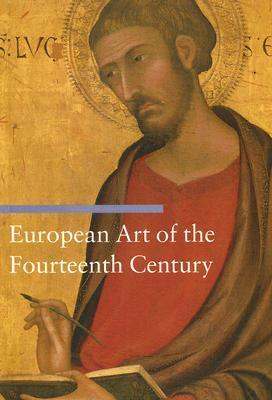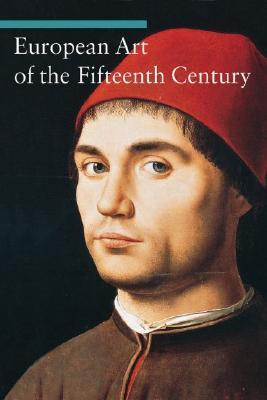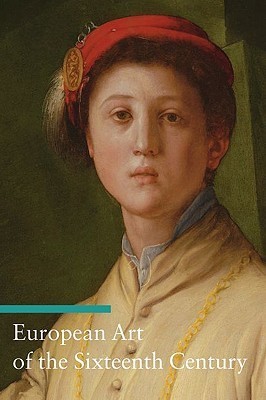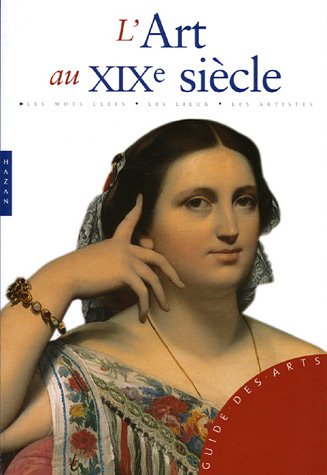


Art Through the Centuries
Series · 6 books · 2004-2008
Books in series

#1
European Art of the Fourteenth Century
2007
Fourteenth-century Europe was ravaged by famine, war, and, most devastatingly, the Black Plague. These widespread crises inspired a mystical religiosity, which emphasized both ecstatic joy and extreme suffering, producing emotionally charged and often graphic depictions of the Crucifixion and
the martyrdoms of the saints.
While the great boom of cathedral building that had marked the previous century waned, cathedrals continued to serve as the centers of religious life and artistic creation. Wealthy patrons sponsored the production of elaborate altarpieces, as well as smaller panel paintings and religious statues
for private devotional use. A growing literate elite created a demand for both richly decorated prayer books and volumes on secular topics. In Italy, the foremost Sienese painter, Duccio, sought to synthesize northern, Gothic influences with eastern, Byzantine ones, while the groundbreaking
Florentine Giotto moved toward the depiction of three-dimensional figures in his wall paintings.
This third volume in the Art through the Centuries series highlights the most noteworthy concepts, geographic centers, and artists of this turbulent century. Important facts about the subjects under discussion are summarized in the margins of each entry, and salient features of the illustrated
artworks are identified and discussed.

#2
European Art of the Fifteenth Century
2004
Influenced by a revival of interest in Greco-Roman ideals and sponsored by a newly prosperous merchant class, fifteenth-century artists produced works of astonishingly innovative content and technique. The International Gothic style of painting, still popular at the beginning of the century,
was giving way to the influence of Early Netherlandish Flemish masters such as Jan van Eyck, who emphasized narrative and the complex use of light for symbolic meaning. Patrons favored paintings in oil and on wooden panels for works ranging from large, hinged altarpieces to small, increasingly
lifelike portraits.
In the Italian city-states of Florence, Venice, and Mantua, artists and architects alike perfected existing techniques and developed new ones. The painter Masaccio mastered linear perspective; the sculptor Donatello produced anatomically correct but idealized figures such as his bronze nude of
David; and the brilliant architect and engineer Brunelleschi integrated Gothic and Renaissance elements to build the self-supporting dome of the Florence Cathedral.
This beautifully illustrated guide analyzes the most important people, places, and concepts of this early Renaissance period, whose explosion of creativity was to spread throughout Europe in the sixteenth century

#3
European Art of the Sixteenth Century
2006
In the sixteenth century the humanist values and admiration for classical antiquity that marked the early Renaissance spread from Italy throughout the rest of the continent, resulting in the development of a number of local artistic styles in other countries. Artists were highly valued and
richly compensated during this period, with many receiving lucrative commissions from papal, royal, and private patrons. Among the sixty artists whose works are presented in this volume are towering figures of Western art such as Michelangelo, Raphael, El Greco, and Titian.
Venetian painters led the way, as oil on canvas supplanted fresco as the most popular medium. Italian Mannerists, such as Pontormo, deviated from classical forms, creating figures with elongated proportions and exaggerated poses. In countries that experienced the Protestant Reformation, such as
England, many artists turned to portraiture and other secular subjects.
This second volume in the Art through the Centuries series is divided into three sections that discuss the important people, concepts, and artistic centers of this innovative period. Important facts are summarized in the margins of each entry, and key facets of the illustrations are identified
and discussed.

#5
European Art of the Eighteenth Century
2008
This latest volume in the Art Through the Centuries series presents the most important artists and artistic concepts of the eighteenth century. While the Baroque style, with its emphasis on emotionalism and naturalistic forms, had dominated the seventeenth century, a new sensibility, the Rococo, emerged in the early years of the next century. The Rococo style, characterized by delicately curving forms, pastel colors, and a lighthearted mood, began in French architectural and interior design and became popularized in the paintings of Jean-Antoine Watteau and Francois Boucher. In the second half of the century, in response to critics who urged a return to morally uplifting art and stimulated by excavations at Pompeii and Herculaneum, artists began to emulate Classical Greek and Roman models. Reinforced by aristocratic collectors who made the Grand Tour of Europe’s Classical sites, this Neoclassical style found mature expression in Antonio Canova’s sculptures and in the paintings of Jacques-Louis David, whose tributes to Roman republican virtues helped fuel French revolutionary fervor.

#6
L'Art Au Xixe Siecle
2005
正版授权 卖家 : Boolee
加微信\[soweinc\]每天分享好书,邀你加入国际微信群学习交流.
微信好友低至5优惠 .
书名:图解欧洲艺术史:19世纪
简介:未读·艺术家 | 打破时间顺序,可从任何一页看起的艺术史,意大利专业艺术出版社经典读物,100个关键词串联起19世纪这个充满变革与创新的时代
作者:(意) 加布里埃·克列帕迪著 著 ,李思佳 译,未读 出品,
出版社:北京联合出版有限公司
出版时间:2019年12月
装订方式:平装-锁线胶订
分类:艺术|世界各国艺术概况|艺术史/艺术思想史

#7
Il Novecento. Avanguardie. Le parole chiave, i luoghi, i protagonisti
2005
\- Un tableau d’une grande clarté des avant-gardes européennes du début du siècle. Sous forme de fiches techniques, on aborde les avant-gardes surgies dans la première moitié du XXe siècle à travers 3 axes : une description des différents mouvements artistiques de l'Art nouveau à l'art concret, une mise en avant des villes européennes et américaines particulièrement actives pendant cette période et une présentation de 59 artistes marquants.
Ce livre propose d’aborder les avant-gardes du XXe siècle à travers trois axes. Les différents mouvements artistiques sont décrits dans le premier chapitre, de l’Art nouveau à l’art concret en Europe, en passant par le japonisme, la Section d’or, De Stijl ou le muralisme ; le deuxième établit une « géographie de l’art », mettant en avant des villes européennes et américaines particulièrement actives au cours de cette période ; le troisième, enfin, présente 59 artistes marquants, d’Alexandre Archipenko à Grant Wood, mais aussi Marc Chagall, Frida Kahlo, Man Ray ou Chaïm Soutine. La circulation entre les différents courants et artistes est facilitée par des renvois à d’autres articles, mentionnés à la fin des fiches techniques très détaillées. Un index complète cet ensemble.